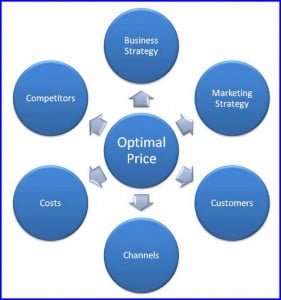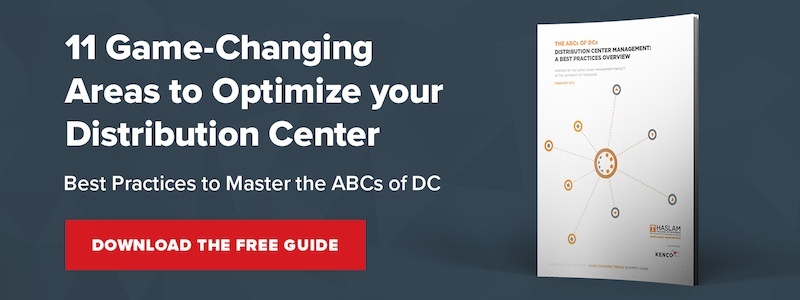
The world of pricing in logistics runs the gamut. From Mom & Pop companies who quote new business off of a rate sheet that has hung on the office wall since Grandpa was in charge; to multinational 3PLs with complex pricing models tied to real-time cost data and engineered labor standards. What remains constant is that the costs can be broken down into two categories; space and labor. Finally, you add profit to these costs and you are finished, correct?
Breaking Down The Costs
Pinpointing the costs to run a distribution center is often very difficult. Let's look at an example...
Your warehouse is 10,000 square feet and you pay the landlord $0.50 per foot, per month for rent, taxes, insurance and maintenance; ergo the cost is $5,000 per month. Add to this the cost of utilities, racking, phone lines, striping, dock hardware, janitorial services, trash removal, et cetera. The variability and uncertainty of the cost of space becomes apparent. For the sake of this example, let's assume your monthly cost of space is $7,000.
The above figures beg the questions:
- How much do you charge your customers for the space?
- In what manner do you quote your rate; per square foot, per pallet, or per case?
We need to understand how much of the 10,000 square foot building is capable of storing product. We can't store pallets in the break rooms, bathrooms, conference rooms, offices, docks or drive aisles. We must pay for those common areas from the storage revenue we generate from truly "sellable" storage space. Further, we cannot run an effective operation if we use all of our storage locations. We need available space throughout the building to make room for the next truckload receipt, allow for logical storage locations adjacent to picking locations, allow for minimal traffic congestion in the aisles, and so on. When a building is "full," every pallet position is occupied, there is no room for the next inbound truckload of product, and pallets are forced to be stored in locations that are not adjacent to their point of use.
Too full, and your building is dock-locked; too empty and you can't afford to pay your rent. Like a hotel, who does not plan on making a profit unless the hotel is full, you should not only profit from your warehouse when it is full. You must decide how full is truly “full” and how profitable the space is and still efficient to operate.
Once you figure out how many pallet positions you can efficiently fit into your 10,000 square foot building (let's say 650 for this example), you then have the basis for calculating your storage cost, and price.
Finding the Break Even
Taking our example to a more concrete illustration -- Let's assume your building is full when it is 85% occupied. You want to ensure you are profitable when the building is 70% occupied. Whenever your building is more than 70% occupied, you are making a profit on the space, but after 85% occupied, you are hurting productivity and efficiency. If the 650 pallet positions need to be 70% full to make a profit; then you need no less than 455 pallets in the building to "pay the rent" on the entire 10,000 square feet. The cost of the space, we stated earlier, is $7,000 per month. So, you must charge $15.38 per pallet position, per month, for each of the 455 pallets stored to break even on the space.
More questions:
- What does the market bear for storage space?
- Is $15.38 per pallet competitive?
- Will the above price point enable you to fill your building to the desired 70-85% capacity?
- What if you are courting a new potential customer who needs 15,000 square feet and the only available building is 30,000 square feet?
- Who pays for the unused space in the above situation?
- Do you pass on the opportunity? OR work with it?
- Do you expect to win the new customer if you charge him double just to cover the cost of the new building that is twice as big as he needs?
OK — Here's Another Scenario
Let's assume you have won new business that requires you to store an average of 500 pallets per month. This is great news! They want to use all of your space needed to make a profit and then some! They additionally agree to pay $15.38 per pallet, per month. Great! You sign the lease, and await the move-in date.
THEN they tell you they are going to move in slowly over the next 3 months while the new product is produced. They expect to use an average of 250 pallet positions during the first six months of the year, and an average of 750 pallet positions during the second half of the year... averaging 500 pallets per month.
Now You've Got Problems
 You can't pay your rent with only 250 pallets in the building; and you cannot physically fit 750 pallets in the building either.
You can't pay your rent with only 250 pallets in the building; and you cannot physically fit 750 pallets in the building either.
In the pricing world, it is not enough to thoroughly understand costs, the market, and margin expectations. It is imperative to also thoroughly understand the expectations each potential customer has, and how those expectations will impact the ability to run a profitable business that is capable of meeting their needs.
Next time we can talk about labor.



